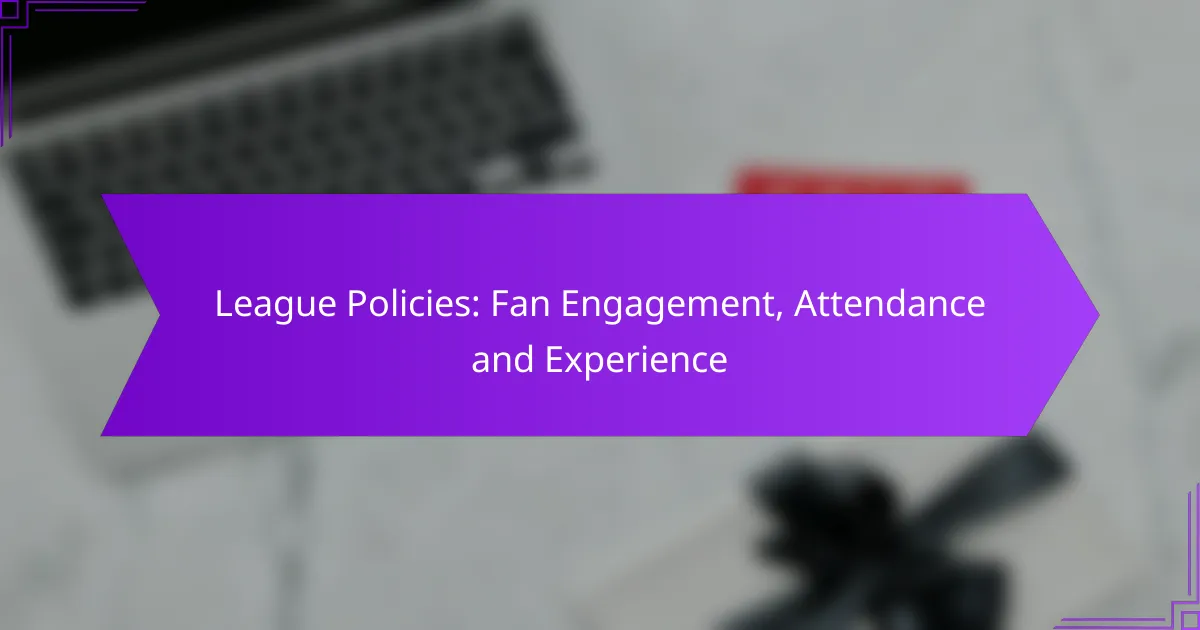MLB governance encompasses the intricate framework of player contracts, trades, and compliance regulations that shape the league’s operations. Player contracts define the relationship between athletes and teams, detailing essential elements such as salary and obligations. Trades facilitate strategic team adjustments while adhering to league rules, and compliance measures ensure fairness and integrity throughout the organization.

What are the key aspects of MLB player contracts?
MLB player contracts are legally binding agreements that outline the terms of employment between players and teams. Key aspects include contract length, salary structures, incentives, player options, and team obligations, all of which significantly influence a player’s career and financial standing.
Contract length and terms
Contract length in MLB can vary widely, typically ranging from one year to multiple years, with many players signing deals of three to five years. Terms often include specific conditions regarding performance, injury clauses, and trade stipulations. Understanding the implications of contract length is crucial for both players and teams, as it affects roster decisions and financial commitments.
Salary structures
MLB salaries are generally structured as either fixed salaries or variable based on performance metrics. Players can earn millions annually, with minimum salaries set by the league, which are subject to change. Teams must navigate salary caps and luxury tax thresholds, making salary negotiation a critical aspect of contract discussions.
Incentives and bonuses
Incentives and bonuses are additional financial rewards tied to specific performance achievements, such as home runs, strikeouts, or All-Star selections. These can significantly enhance a player’s earnings, often adding hundreds of thousands to millions of dollars to their base salary. Players should carefully evaluate the feasibility of achieving these incentives when negotiating contracts.
Player options and clauses
Player options and clauses give players the right to opt-out of their contracts after a certain period or to request trades under specific conditions. Common clauses include no-trade clauses, which protect players from being traded without their consent. Understanding these options is essential for players to maintain control over their careers and future opportunities.
Team obligations
Teams have various obligations under player contracts, including timely salary payments and providing necessary support for player health and performance. Additionally, teams must adhere to league regulations regarding contract terms and player treatment. Failure to meet these obligations can result in legal disputes and penalties for the team.
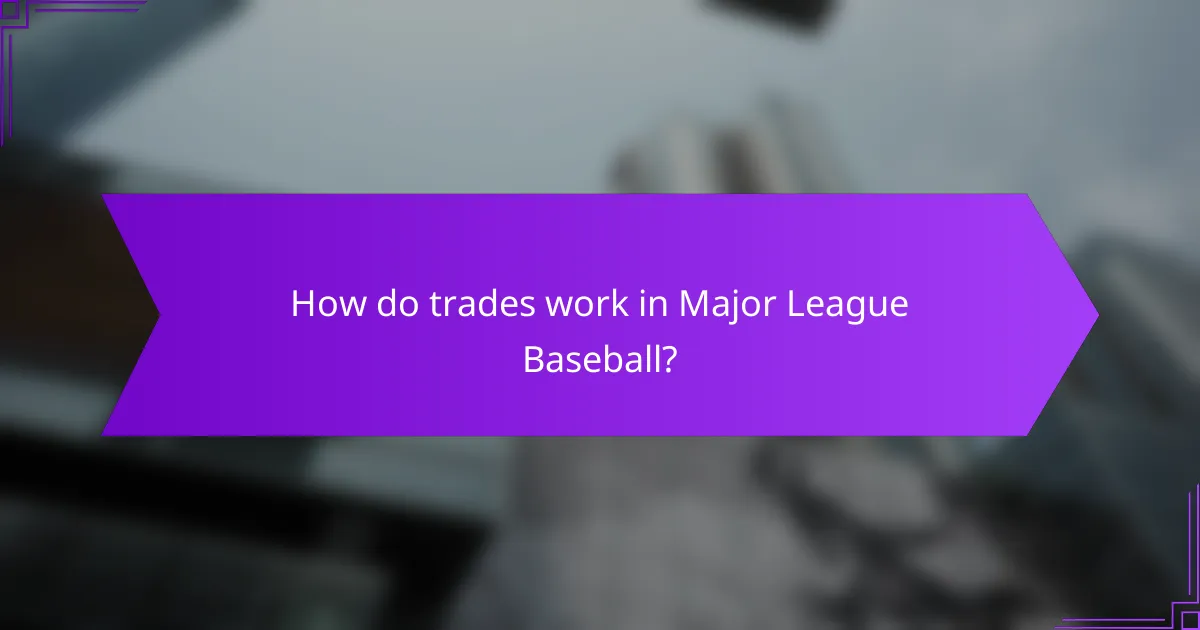
How do trades work in Major League Baseball?
Trades in Major League Baseball (MLB) involve the exchange of players between teams, often to enhance performance or rebuild rosters. Teams negotiate terms, and once agreed upon, the trade must comply with league rules and player contracts.
Trade deadlines
MLB has specific trade deadlines that teams must adhere to, typically occurring in late July for non-waiver trades. After this date, teams can only make trades involving players who have cleared waivers, which can limit options significantly.
Understanding these deadlines is crucial for teams looking to make impactful changes. Missing the deadline can mean waiting until the offseason for potential trades.
Types of trades
There are several types of trades in MLB, including player-for-player trades, cash considerations, and trades involving prospects. Each type serves different strategic purposes, such as acquiring immediate talent or building for the future.
Teams often engage in blockbuster trades that involve multiple players and significant financial implications, while smaller trades may focus on filling specific roster needs without major upheaval.
Impact on player contracts
When a player is traded, their existing contract is transferred to the new team, which must then honor the terms. This can include salary obligations, bonuses, and contract length, impacting the team’s payroll and financial strategy.
Teams must evaluate how a player’s contract fits within their budget and overall roster strategy, as high salaries can limit future moves or player acquisitions.
Trade waivers
Trade waivers allow teams to place players on waivers before the trade deadline, giving other teams the chance to claim them. If a player is claimed, the original team can either trade them or pull them back from waivers.
This process can create opportunities for teams to offload high-salary players or those not fitting into future plans, but it also requires careful consideration of the player’s value and potential interest from other teams.
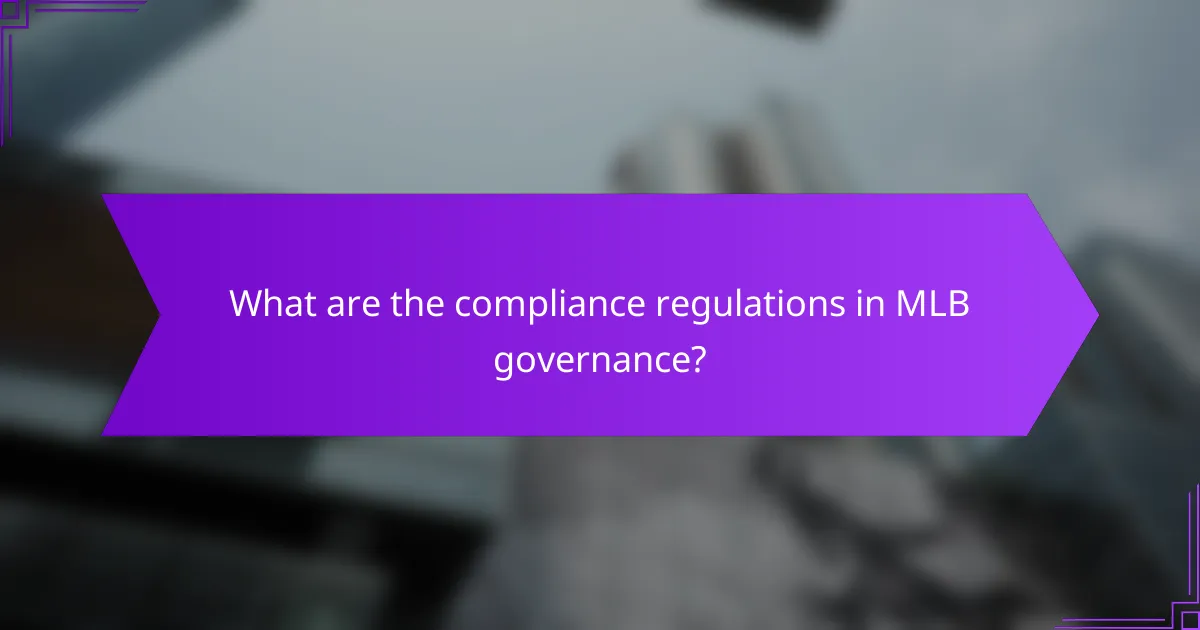
What are the compliance regulations in MLB governance?
Compliance regulations in MLB governance ensure that teams and players adhere to established rules regarding contracts, trades, and overall conduct. These regulations are designed to maintain fairness and integrity within the league, promoting a competitive balance among teams.
MLB Player Association guidelines
The MLB Player Association (MLBPA) establishes guidelines that govern player contracts and working conditions. These guidelines cover aspects such as minimum salary requirements, benefits, and the negotiation process for contracts. Players must be aware of these rules to ensure their rights are protected during negotiations.
For example, the MLBPA mandates that all players receive a minimum salary, which is adjusted periodically. Understanding these guidelines helps players and agents navigate contract discussions effectively.
Salary cap implications
Unlike many other professional sports leagues, Major League Baseball does not have a strict salary cap. However, teams must comply with luxury tax thresholds, which impose financial penalties on teams exceeding a certain payroll level. This system encourages teams to manage their budgets while allowing for flexibility in player spending.
Teams should consider the implications of exceeding these thresholds, as penalties can reach significant amounts. Effective budget management is crucial to avoid luxury tax penalties and maintain competitive team rosters.
Anti-tampering rules
Anti-tampering rules in MLB prevent teams from interfering with other teams’ players or contracts. These regulations prohibit direct or indirect communication with players under contract without permission from their current team. Violations can lead to fines and loss of draft picks.
Teams must ensure compliance by refraining from discussing potential trades or contracts with players who are not free agents. Understanding these rules is essential to avoid costly penalties and maintain a good standing within the league.
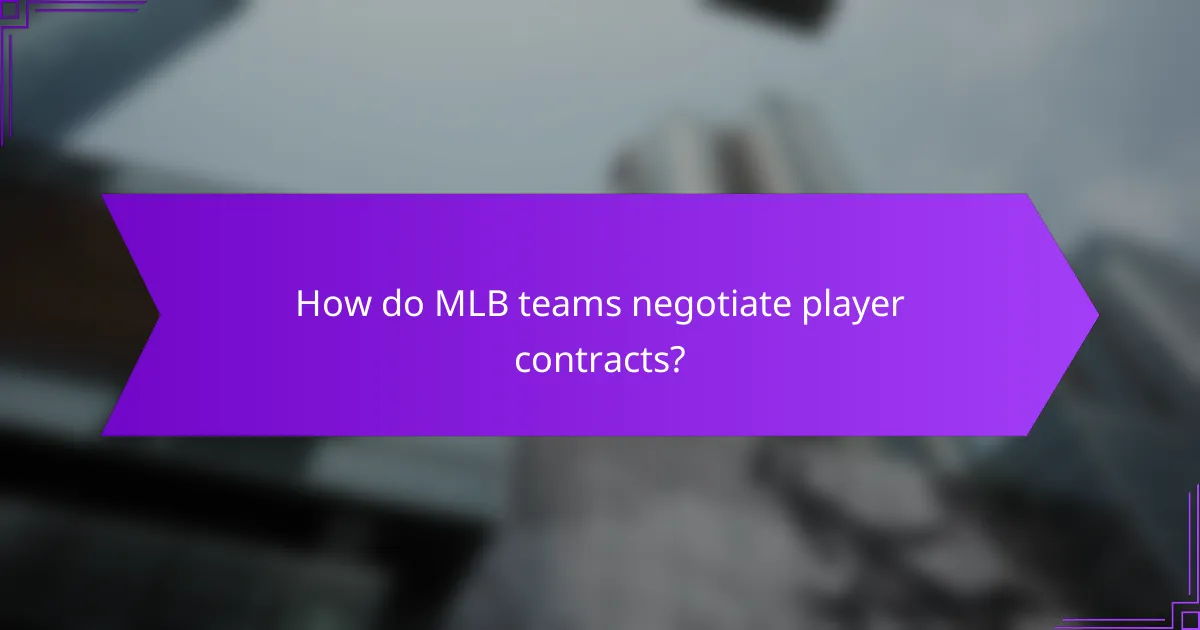
How do MLB teams negotiate player contracts?
MLB teams negotiate player contracts through a structured process involving agents, market assessments, and strategic negotiation techniques. These negotiations determine the terms of employment, including salary, duration, and performance incentives, which can significantly impact a team’s roster and financial health.
Agent roles in negotiations
Agents play a crucial role in negotiating player contracts, acting as intermediaries between the player and the team. They leverage their expertise and industry connections to secure favorable terms, often negotiating on behalf of multiple clients simultaneously.
Agents typically prepare detailed analyses of a player’s performance, market trends, and comparable contracts to strengthen their negotiating position. Their experience in the field allows them to navigate complex discussions and advocate effectively for their clients’ interests.
Market value assessments
Market value assessments are essential for determining a player’s worth in negotiations. Teams and agents analyze recent contracts for similar players, considering factors like performance metrics, age, and position to establish a baseline for negotiations.
Understanding market trends helps teams avoid overpaying while ensuring they remain competitive. For example, a player with a strong track record may command a contract in the high millions, while emerging talents might negotiate in the low millions or even hundreds of thousands.
Negotiation strategies
Effective negotiation strategies can significantly influence the outcome of player contracts. Teams often employ tactics such as offering performance bonuses or incentives to align the player’s interests with team success, which can make contracts more appealing.
Additionally, establishing a clear budget and understanding the team’s financial constraints is vital. Teams should avoid common pitfalls like emotional decision-making or rushing negotiations, as these can lead to unfavorable contract terms or strained relationships with players and agents.
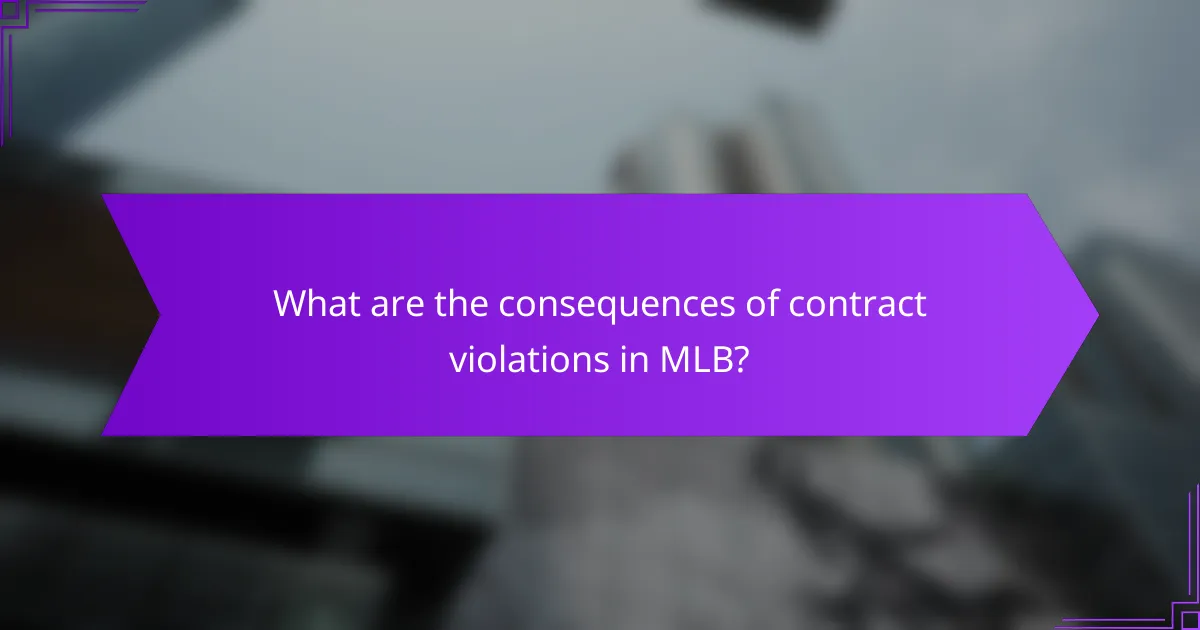
What are the consequences of contract violations in MLB?
Contract violations in Major League Baseball (MLB) can lead to significant penalties for players and teams, including fines, suspensions, or even termination of contracts. The severity of the consequences often depends on the nature of the violation, whether it involves financial misconduct, performance-enhancing drugs, or breach of conduct.
Types of Contract Violations
Contract violations in MLB can take various forms, including failure to fulfill contractual obligations, engaging in prohibited conduct, or violating league policies. Common examples include players not adhering to agreed-upon performance standards or teams failing to meet payment schedules.
Another type of violation involves substance abuse, where players may face penalties for using performance-enhancing drugs. Such violations not only affect the player’s standing but can also impact the team’s reputation and financial standing.
Consequences for Players
Players found in violation of their contracts may face a range of consequences, from fines to suspensions, depending on the severity of the breach. For instance, a player caught using banned substances may receive a suspension lasting from a few games to an entire season.
In extreme cases, repeated violations can lead to termination of the player’s contract, which can significantly impact their career and future earnings. Players may also lose bonuses or incentives tied to their performance or conduct.
Consequences for Teams
Teams can also suffer consequences for contract violations, including financial penalties and loss of draft picks. If a team is found to have knowingly allowed a player to violate contract terms, they may face additional sanctions from the league.
Moreover, teams may experience reputational damage, which can affect their ability to attract new talent or retain existing players. Maintaining compliance with contract terms is crucial for teams to avoid these repercussions.


